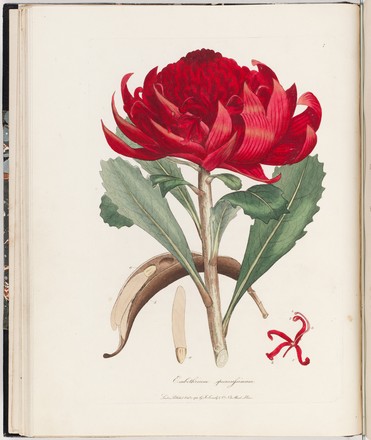
Zoology and botany of New Holland and the isles adjacent
1794
Bound volume
London: Printed by J. Davis: published by J. Sowerby, [1794]
Bequest of Sir William Dixson, 1952
Q79/59
Bound volume
London: Printed by J. Davis: published by J. Sowerby, [1794]
Bequest of Sir William Dixson, 1952
Q79/59
This volume contains a rare copy of A Specimen of the Botany of New Holland and the equally rare Zoology of New Holland – each the first book published on its subject: Australian plants and animals respectively. Both publications feature hand-coloured engravings by the acclaimed naturalist and illustrator James Sowerby. Over his career, Sowerby produced many thousands scientific illustrations but is particularly renowned for his use of colour. He also developed a theory of colour, which reworked Isaac Newton’s idea of seven primary colours to propose three basic colours – red, yellow and blue – from which all other colours could be rendered.
The two original books were bound together in this special volume by Sir William Dixson. Featuring dark blue stained calfskin, marbled sides and matching endpapers, the volume reflects the great care Dixson took in selecting and treating the special items in his collection.


 Back to list
Back to list